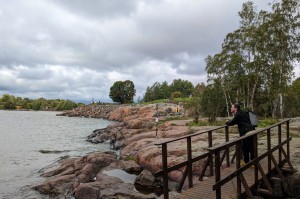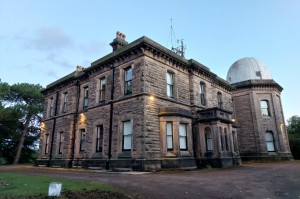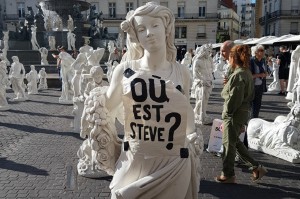Field Trip #16: Cologne
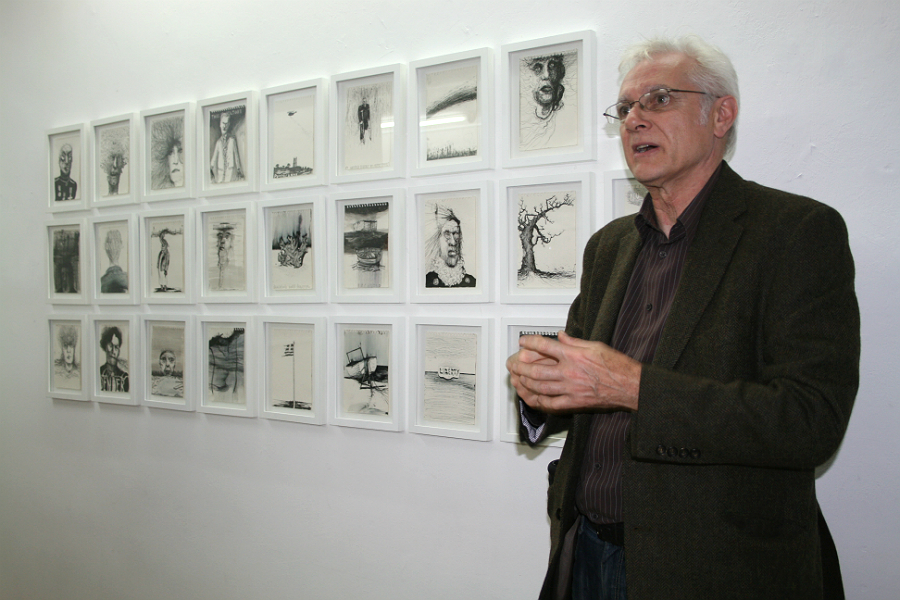
Artist, and Artistic Director at the Bluecoat, Bryan Biggs reports back from Cologne…
There’s a joke going round in Germany at the moment about its Chancellor: ‘What does Angela Merkel do with her old clothes?’ Answer: ‘She wears them.’ And there was an air of fusty familiarity about my recent trip to Cologne, Liverpool’s twin city on the Rhine.
Things have of course changed greatly since my first visit back in 1987, the start of a cultural exchange between the Bluecoat and artists-run gallery, der Bundesverband Bildender Künstler (BBK). However Cologne still displays its total embrace of art, and the breadth of its offer, from world-class museums to artist-run spaces, always makes it such a rewarding place to visit, despite Berlin’s ascendancy.
The BBK is in a plum tourist location by the Rhine, a disco boat moored nearby pumping out Euro-pop into the still night. The metre-plus high-water marks inscribed on the gallery walls remain as a reminder of the levels of the devastating floods of 1993 and 1995. Some of the gallery staff are the same as when we started our exchange in the late-1980s, and the private view Kölsch flows as freely as ever. I was here for the latest Liverpool/Cologne Eight Days A Week exchange, organised by respected Cologne writer, critic and secret artist, Jürgen Kisters, and artist Georg Gartz, who had, with very little resources, pulled off a month-long programme in the city, some twenty-two exhibitions and events.
Here at the BBK, Liverpool artists were exhibiting alongside their Cologne counterparts in a show called Happiness is a warm gun, which matched different generations of artists from both cities, together with a documentary display about Liverpool and Eight Days arranged by Kisters. 1960s works by pivotal Liverpool artist Adrian Henri, plus confident prints, paintings, assemblages and drawings by four artists currently working in the city, Frances Disley, Bernadette O’Toole, Nicki McCubbing and Ailie Rutherford, made for a strong Liverpool selection.
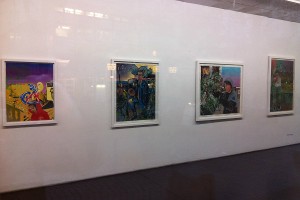
For an independently run gallery, the BBK is a relatively large space in a great location but its future is uncertain as its lease is up next year, and politically it does not enjoy the same support from the city it did at the time of our first collaboration. Independent spaces like this, even in such a gallery-rich city as Cologne, are vital, and it seems new energy and a fresh look at its role in the new political and cultural environment are required of the venue.
On a relatively short visit, with events being staggered across the month and restricted venue opening hours, I did not get to see the whole Eight Days programme. Informal spaces are hosting a range of Liverpool artists: in Young Blood at the VHS education centre, Wolstenholme Creative Space have curated a group show, including ‘Mothman’ photos from Tony Knox who apparently did a fabulous live performance of his comic book hero alter ego at the Art Club. There was performance too (and photos) from George McKane, revealing the wonderful world of Everton FC fan culture in The Dark House.
David Jacques is showing in St Theodor’s church, Gina Czarnecki at the long-established alternative space Moltkerei-Werkstatt, and even I got a chance to show my own drawings and prints with Jürgen at the Freiraum Galerie, a high street shop in the suburbs that is an independent social cultural centre, putting on music, literature and discussion events. Another pairing is Liverpool painter Chiz Turnross, showing with Cologne artist Rolf Jahn at the Kunstraum 27.
There seems to be current investment, a mixture of private and public, in Cologne’s artists’ studios, new complexes springing up away from the city centre, such as the Atelierhaus on the right side of the Rhine, where Madeline Hall from Liverpool’s The Royal Standard showed in Veronika Moos-Brochhagen’s spacious studio. These big bright studios dwarf the comparative broom cupboard that the average Liverpool artist puts up with. Other Liverpool art presented in studios comprised Anna Ketskemety’s paintings in Georg Gartz’s older studio in the Nippes district, whilst Sue Leask created an installation in photographer Anna Stärk’s.
Kölner Graphikwerkstatt, a tremendous printmaking studio and gallery set up by Andreas Vietz and Jutta Vollmer, has been involved in Eight Days for many years, its two founders visiting Liverpool on several occasions. This year seven pairs of artists from the two cities are presenting collaborative work. At another print studio/gallery, the Kunstraum Dreizwanzig, Pete Clarke has a series of new prints too. With talks, a film programme and a display of Liverpool and Cologne cartoonists alongside these exhibitions, Eight Days is a rich and varied offer this year.
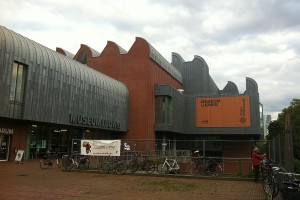
Cologne remains a significant place in which to make, see and discuss art. Its rich array of museums and collections are a powerful pull. At the Museum Ludwig, a day was barely long enough to experience substantial shows by Claes Oldenberg (a large selection of seminal Sixties work) and Art Spiegelman, whose densely displayed retrospective of comic art included his epic graphic novel series, Maus, a metaphor for the holocaust, drawn from his family’s own experience as Polish Jews.
After the immersion of these heavyweight exhibitions, strong on contextual material, outgoing Ludwig director Kaspar Koening’s final show after twelve years at the helm, Before the Law: Post-War Sculpture and Spaces of Contemporary Art, felt decidedly cool. Check out an interview with him.
At the more historical Wallraf-Richartz Museum, blockbuster exhibition 1912 – Mission Moderne reassembled about a sixth of the 600-odd paintings and sculptures from the seminal Sonderbund exhibition held in Cologne a century before, which effectively marked the birth of modern art in Germany.
A more radical selection of artists reshaping European art at the beginning of the century than Roger Fry’s Manet and the Post-Impressionists show in London in 1910 (a version of which came to Liverpool the following year), the Cologne exhibition was a much broader representation of modernist impulses from across Europe.
Taking in alongside Picasso; Cézanne, Gauguin and van Gogh; Munch, Schiele and the young German painters of die Brücke and die Blauer Reiter, as well as artists from less recognised avant-garde centres such as Hungary. The gallery was heaving, and there’s more to follow: the next show is Hockney’s new landscapes that packed them in at the Royal Academy earlier this year.
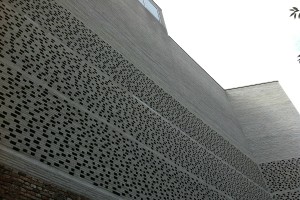
Of all Cologne’s museums, the one you cannot afford to miss is Kolumba, a beautifully designed building (by Peter Zumthor) that integrates the ruins of a Romanesque church that was destroyed in World War II.
Its sixteen exhibition rooms are currently housing Art is Liturgy, a compelling show that spans nine centuries of art selected from the collection of the Archdiocese of Cologne and focused around the work of New York artist Paul Thek (1933-1988) – the Archdiocese holds the largest collection of his work – alongside Gothic carvings, altar pieces and contemporary works by Joseph Beuys, Rebecca Horn, Jannis Kounellis and others.
The exhibition finishes August 2013 – a must-see if you are in Cologne!
Bryan Biggs



